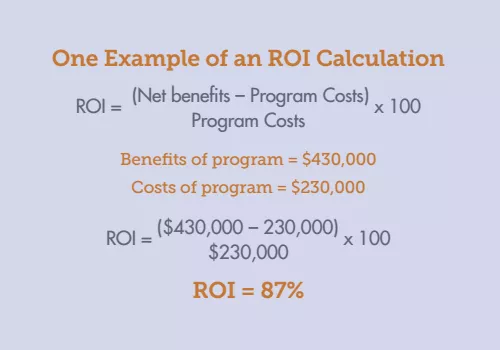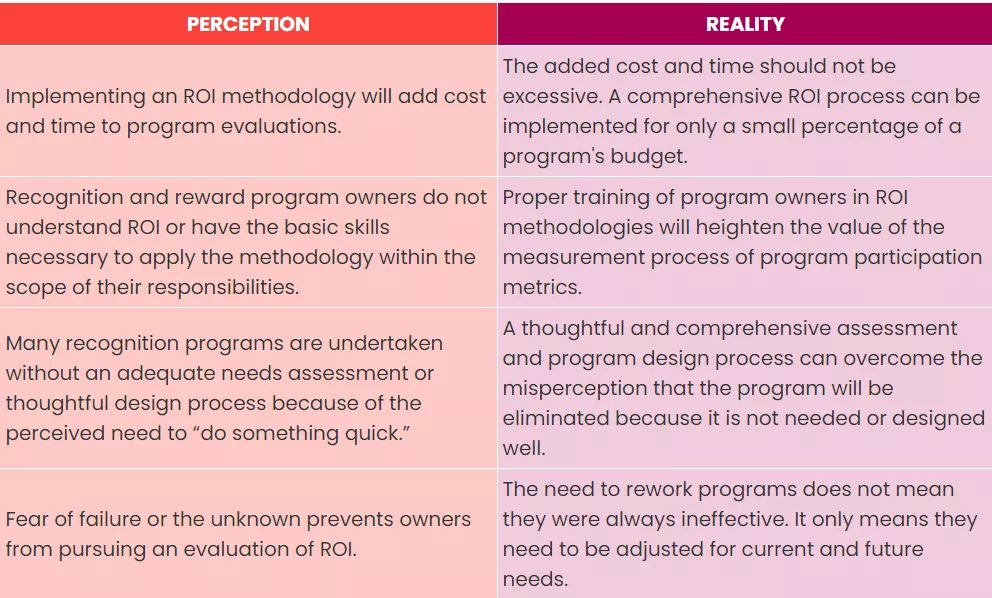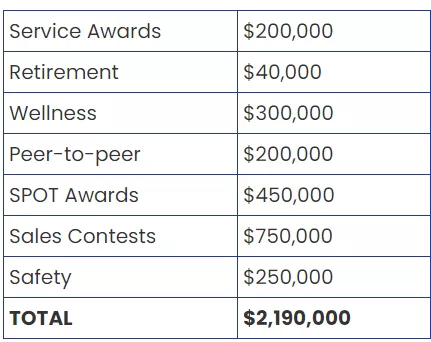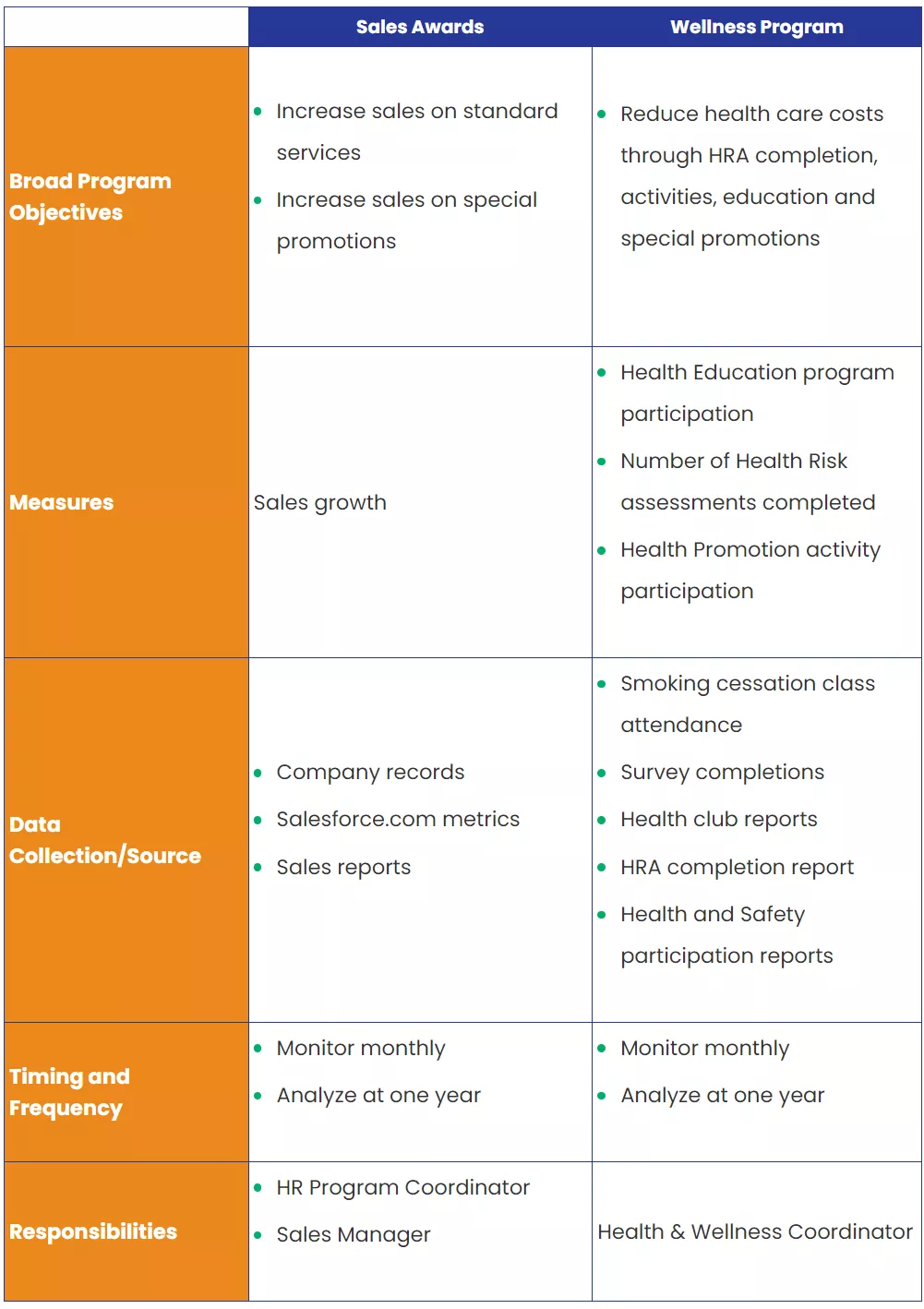
Motivation You Can Measure™: Recognition Program ROI
September 6, 2017
By Gene Park
More and more organizations are moving toward centralized reward and recognition programs for greater program efficiency and effectiveness. Yet, far too many are failing to take what may be the most important step toward reaching their goals. That crucial step is proving their program’s return.
More and more organizations are moving toward centralized reward and recognition programs for greater program efficiency and effectiveness. Yet, far too many are failing to take what may be the most important step toward reaching their goals. That crucial step is proving their program’s return on investment (ROI) through a process that is specific, well-designed, practical and ultimately converts the results of the program into monetary values that the company’s executive team and program leadership cannot only support, but embrace. Business impact data must be converted into monetary values and presented in a compelling format to have an effect on leadership.
Too often, C-suite executives and program leadership never get to see the business-driven data that will convert them into active proponents of recognition and rewards programs. They simply don’t get the documented evidence they need to support program managers who know recognition has a meaningful impact on the bottom line of the business. [1]
But even without formal training or experience in this area, a recognition program manager can pull together a business case — if they have a partner to help them and a map showing them the way.
This article covers four areas:
- Return on Investment and Return on Recognition (ROR) Defined
- The ROI Process: Implementation and Barriers
- Best Practices
- Measurement Model
An innovative approach for assessing the recognition program ROI, this methodology provides a picture of recognition ROI that is meaningful, defendable, and supports the development of any organization’s recognition program.
1. ROI and ROR Defined
It’s important to understand two key terms at the core of calculating the business impact of recognition. The first is a standard business concept — return on investment (ROI). The second is a term unique to rewards and recognition — return on rewards (ROR).
ROI shows the monetary benefits of the program compared with its costs. This includes both hard and soft costs, which we look at in greater depth later in this article.
ROR shows the complete picture of the business returns for your organization’s recognition program, including all of its reward and recognition components (monetary, business impact, and intangible).

The intangible returns on recognition may not always show up on the balance sheet or income statement, but they do deliver value to the business and its workforce, and need to be accounted for in evaluating the true ROI of recognition.
In other words, the return on recognition is not only measured in financial terms, but also in terms of culture changes and attitudes. [2]
2. The ROI Process: Implementation and Barriers
To appreciate the impact of an effective and meaningful ROI process — and to help sell the idea to leadership — it’s helpful to grasp not only the most common reasons that calculating ROI is beneficial, but also the most common barriers to implementation.
Benefits of ROI Implementation
Calculating ROI yields five primary benefits to support the growth and expansion of your recognition program:
- Measures a program’s contribution to the organization: The ROI will determine whether the benefits of a program, expressed in monetary value, outweigh its costs.
- Sets clear priorities: Successful programs can be expanded, inefficient programs can be redesigned and redeployed, and ineffective programs can be discontinued.
- Brings focus to results: A results-based process requires program owners and business leaders to concentrate on measurable objectives.
- Builds respect from senior executives and program sponsors: Measuring the ROI of programs is one of the best ways to earn the respect of your senior management team and your program sponsor.
- Creates positive changes in management perceptions: Changing perceptions is an important step in building a partnership with management and boosting support. [3]
Barriers to ROI Implementation
Business studies and our experience with clients tell us that organizations usually use one or more of four common reasons for not calculating ROI. But each of the four reasons is most often based on misunderstanding or a failure to appreciate the potential of the ROI process.

The ROI Process
Overcoming misconceptions and barriers will validate the monetary value of your recognition program. This can best be accomplished in five stages:
- STAGE 1: Evaluation planning - develop and review program or project objectives; evaluate plans and assess baseline data to be collected
- STAGE 2: Data collection - include data from before and after program implementation
- STAGE 3: Data analysis - isolate the effects of the program
- STAGE 4: Developing ROI - include converting data to monetary value and calculating ROI; account for intangible measures
- STAGE 5: Reporting - general impact study report
3. Six ROI Best Practices
Organizations that generate demonstrable ROI through metrics share six best practices. Adopting these practices can make a huge difference in the quality of your ROI process. [4]
Establish evaluation targets: When evaluating components of your recognition initiative or program, include the number of programs, resources, all costs, and efficiencies.
Perform micro-level evaluation: Evaluate programs individually so the ROI methodology can be linked to a direct payoff.
Use a variety of data collection methods: Match the data collection methods with the programs.
Isolate the effects of the program: Isolate any influences such as sales initiatives or new product launches that may have occurred during the same period so they don’t skew the results of your ROI analysis.
Sample for a more accurate view: Determine how many ROI evaluations are appropriate.
Convert program results into monetary values: Convert data points into monetary units so that each program’s benefits can be compared with the costs.
4. Measurement Model
Along with the six best practices, there are also six levels of recognition measurement — levels zero through five. All recognition programs, if ROI is on their radar at all, operate at the most basic level — zero.
Level zero represents all of the inputs contained in the measurement model—regardless of how you work them into the ROI methodology. Level zero specifically answers the question: “What are we considering with our measurement approach?”
Hard Data and Soft Data Measures
Hard data provides the primary measure of improvement presented as rational, undisputed facts. This data is usually gathered within functional areas throughout an organization.
By contrast, soft data consists of values that represent attitudes, motivation and satisfaction. They are less objective than hard data. Soft data is typically behavior-oriented, and organizations place great emphasis on the measurements it provides. The challenge regarding soft versus hard data is converting soft measures into monetary values. The key to a successful conversion is to remember that ultimately, all roads lead to hard data.
5. Circular Communications: A Hypothetical Case Study
To illustrate the process and outcomes of an effective recognition ROI process, let’s calculate the ROI for Circular Communications, a fictitious company created by Inspirus for this example. Here is some basic information about the company:
Circular provides telecommunication services to midsize and larger businesses
- It has 5,000 employees
- The average employee’s annual salary is $70,000 (not including benefits)
- Payroll is $350 million
- Recognition budget is one percent of payroll
- Circular is spending about $3.5 million across multiple programs
- With its new enterprise approach to centralizing all of its recognition programs, the aggregated $3.5 million budget is centralized and managed by HR
ROI : Methodology at Circular
Suzy, the HR director at Circular, knows the key to effective ROI is capturing the measures that reflect the content of the project, and focusing on issues such as usefulness, relevance, importance, and appropriateness. To that end, she is going to structure her business case to build ROI along the five levels of measurement.
To accomplish this, Suzy will put together a data collection plan to document the data she plans to collect as she proceeds through measurement levels one through five.

Here is a quick look at Circular’s recognition program initiatives and the amount spent on them by category:
Circular’s Recognition Portfolio of Programs and Budget

Circular Communications’ data collection plan should be completed for each program — within each level of measurement — in five steps:
- Identify the business objective (the targeted business impact of the recognition initiative)
- For each objective at each level, identify the measures or metrics associated with it.
- For each measure of each objective, document where the data will come from and the specific source of the data
- For the measurement level: Determine how often the data will be gathered, compiled and analyzed.
- For the measurement level: Document the roles and responsibilities for each process. [5]
Here is an overview of Circular’s recognition program initiatives:

ROI: Building the Business Case
This is measurement level four (only 3 to 5 percent of organizations seek to achieve). This level will make the biggest difference in building better recognition programs. [6]
At level five, Suzy returns to our definition of ROI and applies the data she has collected.
Measurement Level Four, ROI: Wellness Program
- Program benefits: $1,123,875
- Program costs: $385,500
- Benefit-Cost Ratio (BCR): $2.92
- ROI: 192%
Measurement Level Five, ROI: Sales Program
- Program benefits: $6,297,014
- Program costs: $1,070,610
- Benefit-Cost Ratio (BCR): $5.88
ROI: 488%
Suzy understands that recognition has a monetary and non-monetary impact on business. To bolster her ROI calculations, she must include the value of intangible returns. Combined with ROI, this will provide a true picture of Circular’s ROR. [7]
Intangible benefits that contributed to Circular’s ROR include:
- Being listed as a Best Place to Work
- Increased commitment
- Improved teamwork
- Increased job satisfaction
- Improved customer service scores
- Improved communication
Summary
Using this innovative, proactive approach to recognition ROI has many benefits — everything from providing a valuable assessment of the current programs to garnering solid support from senior management.
A meaningful ROI process can be accomplished if you have a good partner in the planning process and follow a well-researched and proven road map. Keeping these eight summary points in mind, too:
- ROI shows the monetary benefits of impact measures compared with the cost of the project.
- ROR shows the monetary and intangible returns related to investing in recognition that delivers value to the business and its workforce.
- The ROI process must be simple and easy to implement, credible, flexible and incorporate all types of data.
- ROI implementation measures a program’s contribution, and helps managers understand that projects and programs are investments.
- Implementing ROI methodology requires discipline.
- Best-practice companies evaluate individual programs rather than the entire recognition initiative.
- There are six levels of measurement — zero through five. They measure inputs, reaction and employee satisfaction, program participation, budget utilization, business impact, and ROI.
- Hard data is measurable and factual. Soft data represents attitudes, motivations and satisfaction.
Sources
[1] [3] Fierce Inc. White Paper “ROI of Skillful Conversation” www.fierce.com
[4] Phillips, Patricia Pulliam, Ph.D., and Jack J. Phillips, Ph.D., Data Collection – Planning For and Collecting All Types of Data, published by Pfeiffer
[5] Phillips and Phillips, Isolation of Results – Defining the Impact of the Program, published by Pfeiffer
[6] Phillips and Phillips, Data Conversion – Calculating the Monetary Benefits, published by Pfeiffer
[7] Czarnecki, Mark T., Managing By Measuring – How to Improve Your Organization’s Performance, published by AMACOM, 1999.




